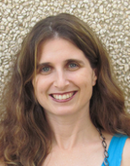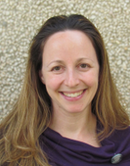Communication, especially writing, is indeed a challenge for scientists. Scientists find that writing for the general public is particularly difficult, primarily because they have only been trained to communicate with the academic community. It seems that as scientists are trained to ‘speak science,’ they forget how to communicate with the public. Perhaps learning to write science needs to be accompanied by learning how to write for the public. We believe that by exposing and teaching scientists to popular science communication, they will become better writers — not only for the academic community, but for the community at large.
As such, our study aims to determine the relationship between the acquisition of two genres, academic and popular science communication, which serve as scientists’ communication channels. Specifically, we ask how training in the academic writing course affects academic and popular science writing skills.
In our research, we test twenty-two groups of graduate students participating in the academic graduate writing course. The graduate students will be predominately PhD students, from all faculties in the Technion in their first, second or third semester. Students enrolled in the writing course will take a prewriting test in the first week, followed by various levels of intervention on the subject of public science communication, and then a posttest in the final week of the semester. The pre and posttests will include samples of writing for an academic and a general audience. Writing samples will be evaluated according to general writing ability, English writing ability and genre/audience.
This study aims to contribute to the theoretical knowledge on writing outcomes as a result of teaching two contrasting genres in written communication of science. It hopes to shed light on whether there is interference or synergy in the learning of two genres. This study will also contribute practically for teaching at the graduate level, including creating research-based guidelines for instruction of writing genres.
The De-Jargonizer:
Science is fascinating to many, but sentences that are full of expert-level terms and description can scare away even the most passionate readers. Can scientists learn to talk about their research without using too many technical terms? One of the obstacles to avoiding jargon is that scientists suffer from “the curse of knowledge” – they simply do not remember not knowing what they now know as experts. (Seriously, who doesn’t know what a ‘volumetric specific impulse’ and ‘ low Reynolds hydrodynamics’ are?)
To help scientists recognize which words are jargon and should be avoided or explained when engaging with the public, researchers at the Technion-Israel Institute of Technology and HIT–Holon Institute of Technology have created a program that automatically identifies terms the average person may not know. In a recent paper published in the journal PLOS One, the free of charge and scientist-friendly De-Jargonizer hosted at scienceandpublic.com is introduced. Once a text is uploaded or pasted, the algorithm color codes words in the text as either frequent or intermediate level general vocabulary, or jargon. This is based on frequency of the words on an internet news site, designed and written for the public. The corpus will be updated periodically, and can be expanded to include other sources and languages.
“The De-Jargonizer provides a grim glimpse at the current level of jargon in scientific writing,” says Technion Prof. Ayelet Baram-Tsabari. When the authors compared 5,000 pairs of lay summaries, written for a wide audience, and their corresponding academic abstracts published in the journals PLOS Computational Biology and PLOS Genetics. Results showed that lay summaries indeed include less jargon (10%) than academic abstracts (14%) on average; however, research previously showed that for adequate comprehension, readers need to be familiar with 98% of the words. Therefore, the recommended level of unfamiliar words, i.e. jargon, is 2% – much lower than the percentage found in the lay summaries.
“The scientists intuitively understand they need to use less jargon when speaking with the public than to their peers”, says Baram-Tsabari, “but using so many unfamiliar words excludes the very people they are trying to engage.”
The program is designed to help scientists and science communication instructors improve and adapt vocabulary use when communicating with non-experts. Also, professionals in medicine could use it to evaluate text level for communication with patients. Overall, the importance of such a tool is to aid in making science and research accessible to the public, to support informed citizenship and more productive dialogue in these complex times for science in society.
- The De-Jargonizer
- Press coverage of the De-Jargonizer
- PLOS ONE article: Automatic jargon identifier for scientists engaging with the public and science communication educators
Project members:
 Tzipora Rakedzon, Ph.D. Student Tzipora Rakedzon, Ph.D. Student |
 Yael Barel-Ben David, Ph.D. Student Yael Barel-Ben David, Ph.D. Student |

Orly Wolfson |
 Ayelet Baram-Tsabari, Associate Professor Ayelet Baram-Tsabari, Associate Professor |
